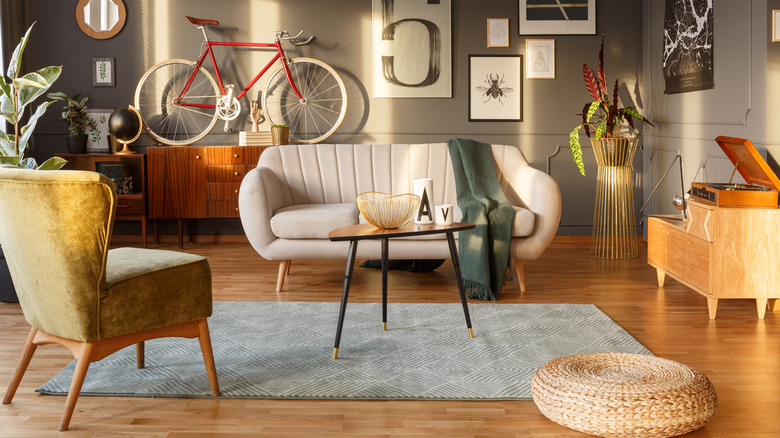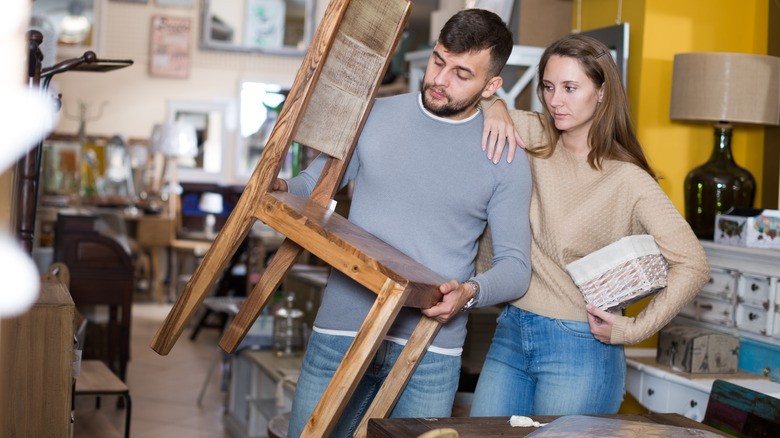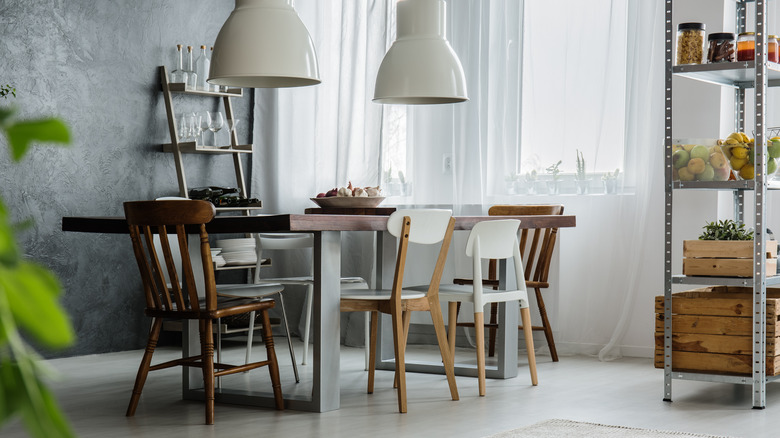Newstalgia: The Viral Decor Trend That Doesn't Play By The Rules
It seems like every week, there's a new interior design trend or "core," but "newstalgia" is one growing trend you won't want to miss — and you're probably already nailing it. As you might have guessed, newstalgia is a portmanteau of the words "new" and "nostalgia." The concept describes a home filled with a combination of new or purchased items and items you've inherited or collected from friends and family. Instead of sticking to one interior design aesthetic like minimalism, maximalism, contemporary, or cottagecore, newstalgia embraces imperfect design and takes elements from across trends and generations. Think staple pieces blended with sentimental touches.
The result of this blending is a home that feels unique to you, where every item has a story or was carefully chosen because you like it, not because it fits into a particular look you're going for. Newstalgia is a relatively easy concept to incorporate into your home. Still, its pitfalls could leave your space looking less "cool and collected" and more "mismatched garage sale." Here's what you need to know about embracing this trend.
Newstalgia is nothing new
Newstalgia is more than an aesthetic trend; it reflects some of the real struggles of modern-day homeowners and renters. "Furniture poverty" is a real problem affecting more than 4.8 million households in the UK alone (via The Guardian). In such a tight economy, most people can't afford to revamp their homes with new pieces, and many depend on hand-me-down furniture and secondhand finds to furnish their homes. In fact, the global secondhand furniture market is expected to nearly double in coming years, from 29.8 billion in 2021 to 58.58 billion in 2030 (via Straits Research).
When shopping secondhand, you can't guarantee that your findings will look fresh and trendy or even match inside your home, so it makes sense that people would embrace the dilemma rather than fight it. Whether they can afford to buy all new pieces or not, most people already have a mixture of things in their homes. For example, your living room might be decorated with a brand-new couch, a secondhand coffee table, an Ikea bookshelf from college, a family heirloom quilt, and a pricey statement lamp. Because of its inherently "messy" nature, newstalgia is closely related to the grandmillennial design style but with no intention of achieving a specific look. Newstalgia is less about claiming a particular aesthetic and more about creating a home that speaks to you using pieces you already have.
How to bring newstalgia home
Homeowners are stepping away from mass-produced buy-as-a-set spaces and leaning more into collected, mixed-and-matched interior design. Secondhand shopping can be one way to bring newstalgia into your home, but furniture pieces and décor will mean much more if they come from friends and family, hence the "nostalgia" part of the trend. If you know someone, like a parent, who would gladly clear up space in their home and give you some of their old belongings, try "shopping" at their place to see what they offer. Try not to turn up your nose at items that look dated or damaged; resourcefulness is a big part of newstalgia. Instead, be creative and think about ways to repaint, restore, and reinvent old pieces or flip thrifted furniture.
As previously mentioned, newstalgic interior design does run the risk of looking cluttered. To avoid absolute chaos, try only to incorporate clutter with a purpose and keep functional spaces simple, such as the dining room, bathrooms, and kitchen. Avoid décor just for the sake of décor; each piece in your home should have a meaningful use, sentimental value, or secondary purpose. Some examples could be a pretty vintage tea kettle in the kitchen or your childhood piggy bank by the door for catching loose change.


